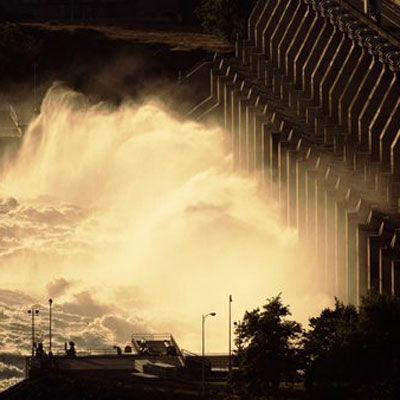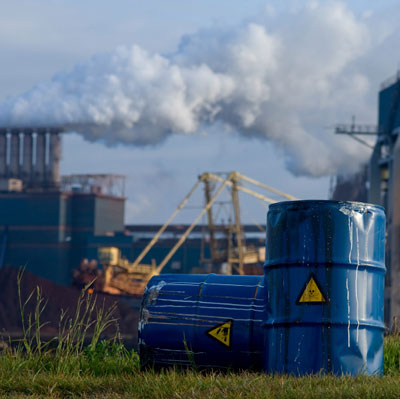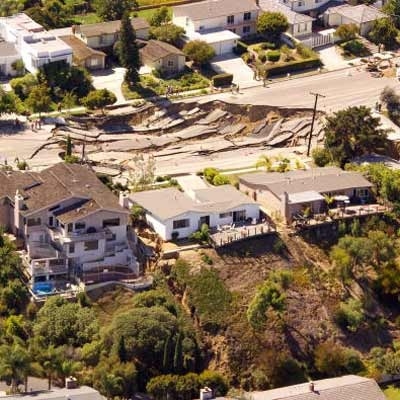5 U.S. Cities That Could Disappear Tomorrow
Recently, news about devastating earthquakes, hurricanes, floods, wildfires, and tsunamis around the world had us wondering: What's the worst that can happen in the United States? Turns out it's pretty bad. We're not talking about a couple of feet of water in your basement or a tree down in the yard. We're talking about your home obliterated. And not just your home, but whole metropolitan areas. As This Old House found out, no matter where you live, you can't escape from the forces of nature. Read on to see how, in just the blink of an eye, entire American cities could be wiped off the face of the Earth. See all 10 cities at thisoldhouse.com
-
1. New York, NY

Think the 2006 Indian Ocean tsunami, which killed 250,000 people, was the worst wave that could ever hit mankind? Think again. Off the coast of western Africa sits Cumbre Vieja, a volcano in the Canary Islands that scientists believe is in imminent danger of collapse. The falling rock that results would send a wall of water hurtling across the Atlantic at 500 miles per hour. Seven hours after those rocks splash down, a wall of water nearly 200 feet tall would be approaching the East coast of the United States. With enough power to sweep 20 miles inland, that could take out most cities on the east coast--including the New York metropolitan area, whose 19 million lives would be in danger.
-
2. Seattle, WA

Nothing says "Welcome to the neighborhood" like signing an acknowledgment of the potential damage a volcanic eruption could have on your home. That's what residents in one county in the shadow of Puget Sound's Glacier Peak have to do when they buy land. Considered more explosive than Mount St. Helen's, whose 1980 eruption caused the world's largest landslide to date, Glacier Peak is ranked by the U.S. Geological Survey as one of the highest-threat volcanoes in the country. The problem is that, while Mount St. Helen's has been under constant surveillance since its last eruption, Glacier Peak is not nearly as well monitored. The only warning signs that it's about to blow will be a series of earthquakes, making all 10,541 feet of it a colossal threat.
-
3. Eugene, OR

Here's an unfortunate matchup: A city sitting in the Cascadia Subduction Zone (a major earthquake hotspot in the Pacific Northwest) and a region home to nine important dams. Eugene, Oregon would be nothing more than a memory after a 9.0 magnitude earthquake. Forty feet of water, let loose by the collapsing dams, would flood the city entirely. With intense flooding, buildings destroyed beyond repair, bridges collapsing, highways non-navigable, and homes left unrecognizable, most of the 137,000 residents would be affected and damages could be as high as $10 billion dollars.
-
4. Newark, NJ

Location, location, location; not only is Newark home to Newark Liberty International Airport (a major NY Metropolitan Area airport) and five miles from downtown Manhattan, it's also the site of five of the nation's highest risk chemical plants. Whether by terrorist attack or negligence, the release of toxic gases, such as chlorine, would have serious effects. The chemicals would poison the air, essentially burning alive anyone exposed to the gases; internally, fluids would fill lungs and suffocate the person by drowning. The Kuehne Chemical facility sits just three miles from the airport, and substantial chemical poisoning could affect a 16-mile radius from the Newark epicenter.
-
5. Anchorage, AK

Anchorage residents with solid roofing, strong windows, and sturdy concrete-and-steel walls may withstand initial seismic activity from a Castle Mountain fault-line quake. But if the city experiences an earthquake like the one that hit in 1964, they might not be as well prepared. That earthquake lasted nearly 5 minutes and measured 9.2 on the Richter scale, and was classified as the most powerful earthquake recorded in North America. The $311 million in damages came mainly from liquefaction--a scarier factor than the price tag. Liquefaction gives looser, otherwise solid terrain the properties of a liquid during an earthquake, allowing cars and structures to sink into the ground and resulting in a tremendous amount of damage (as in the recent earthquake in Christchurch, New Zealand). Because Anchorage sits atop Alaska's "quick clay"—also known as Bootlegger Cove Clay—which means large portions of the city could be swallowed up by liquefaction if a large quake were to hit again.
Become a Community Contributor.

